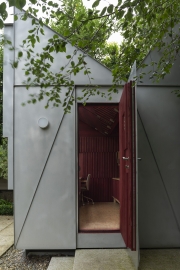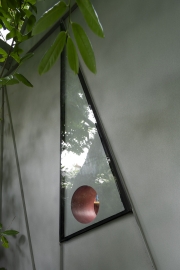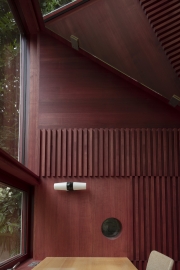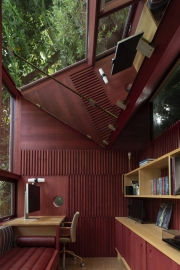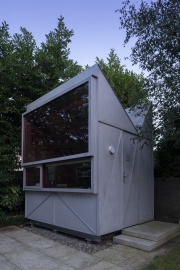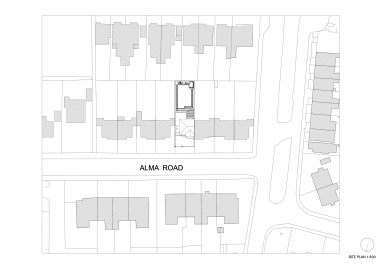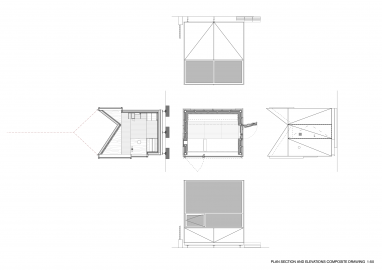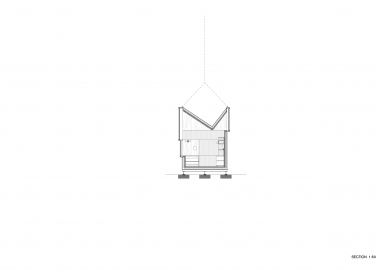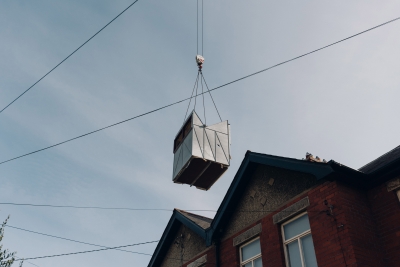Writer's Room
Arising from the lockdowns of covid, this project makes a room for a writer. His site was land locked site and he asked that whatever was built could be taken with him in years to come, so we made it nomadic. It was craned into position, and developed its language from this condition.
Covid compressed space, and fragmented social contact. We dreamed this project up by thinking of limits - the size of the crane that could reach to the site, the weight it could bear, the needs of its inhabitant. We thought of the Apollo capsule, Cedric Price’s nomadic architectures and Perriand's studies of éspace minimum - made of measure, and formed by contingency.
The room is made with an exoskeleton of recycled aluminium, and lined in red beech. Its roof is shaped to make 4 lifting points at each corner. Inside, it is just long enough to make a bed to rest and a desk to work. The underside of its roof is mirrored so that when you lie on the daybed you can get a distant view. It is a small room with the universe inside.
We enjoy how limits can produce an architectural language. Each part of this design of it is calibrated to its occupant, and making a place to work, to rest and to dream. The dimensions were designed within the weight limits of the crane that would carry it, and the form to offer 4 lifting eyes. Its materiality and construction were to minimise carbon and energy use. Foundations were augured screws, while the exoskeleton was made in recycled aluminium. Its small size and high levels of insulation means that it can be heated with the occupants body heat.
The interior is designed with care to allow for prolonged occupation - sustainably sourced beechwood makes the walls and floors, stained red to allow for a rich sense of interiority in the green suburban setting.
Foundations: Augured Screw
Structure: Recycled Aluminium Exoskeleton
Lining: Sustainably sourced beech

